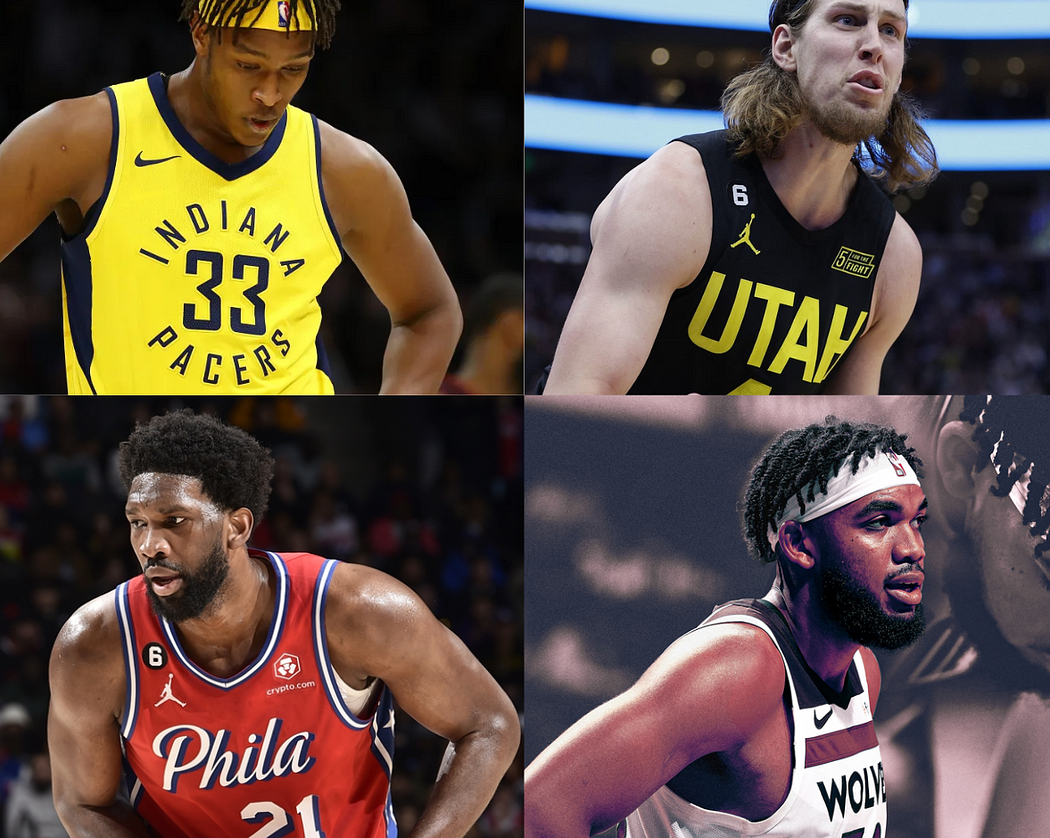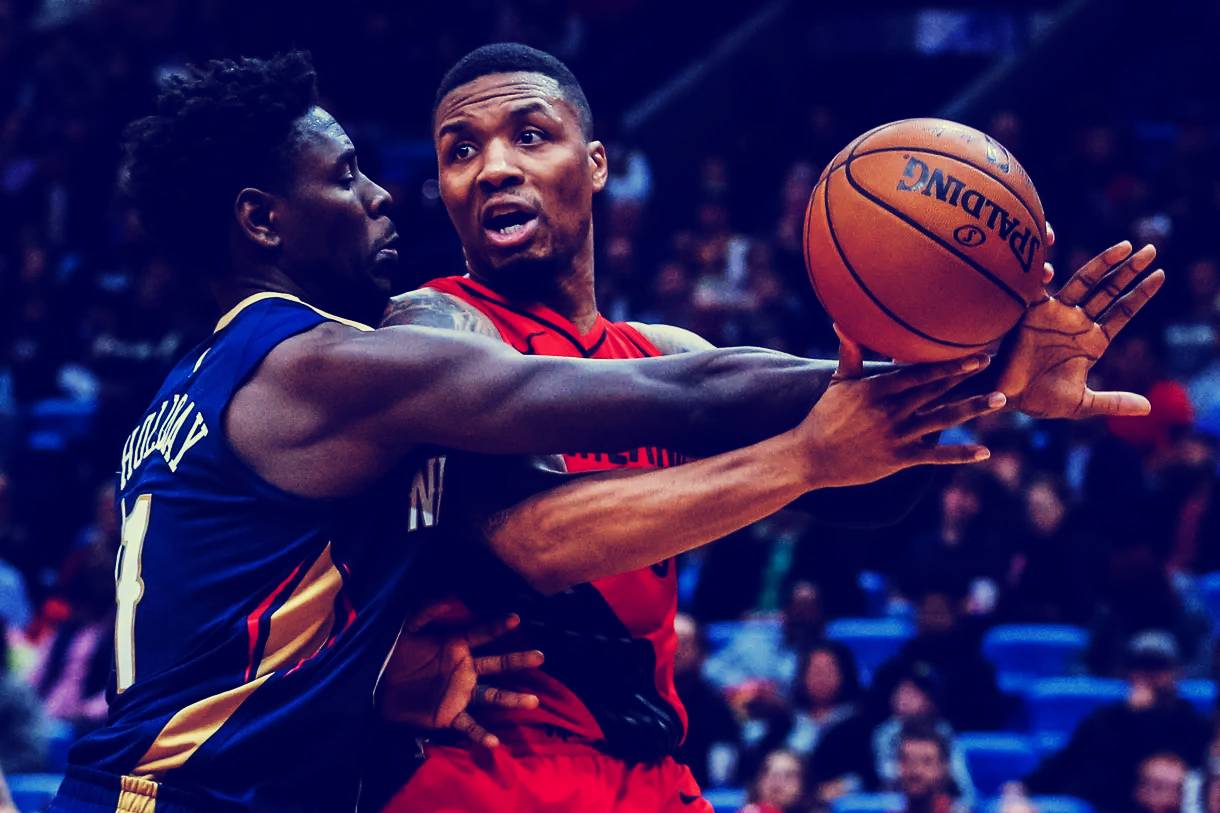The Damian Lillard and Jrue Holiday trades have made it clear the Los Angeles Lakers will need to upgrade their starting lineup, most likely their backcourt, if they want to legitimately contend for the championship.
While it may be too early or too honest for some fans, the reality is the playing field has changed and it’s no longer just the Nuggets whom the Lakers have to seriously contend with but also the Bucks and Celtics.
When you include the Suns, there are now four teams who have better starting lineups and specifically better backcourts than the Lakers, which all but guarantees they will be forced to make a move at the deadline.
The other reality facing the Lakers is D’Angelo Russell is all but gone as he’s the only way to upgrade the team’s backcourt since Austin Reaves has now essentially become untouchable like LeBron James and Anthony Davis.
Because recently signed players cannot be traded until after December 15, the Lakers were unable to pursue Jrue Holiday and will have to wait two and a half months before being able to upgrade their starting backcourt.
Since Austin can play both guard positions, the Lakers will be able to target both point guards and shooting guards and will have seven weeks from December 15, 2023 to the February 8, 2024 trade deadline to make a trade.
With James, Davis, and Reaves untouchable, the pressure to perform will mount on players like Russell, Hachimura, and Prince, who earn enough that the Lakers may need to include them to match salaries in a trade.
Let’s look at why the Lakers need a better starting backcourt, who are their best guard and center trade options to upgrade their starting lineup, and if there’s a realistic scenario where the Lakers don’t have to make a big trade.
Why Do Lakers Need To Upgrade Their Starting Backcourt?

The Los Angeles Lakers’ backcourt of point guard D’Angelo Russell and shooting guard Austin Reaves cannot match the backcourt star power of the Denver Nuggets, Phoenix Suns, Milwaukee Bucks, or Boston Celtics.
It’s not that Russell and Reaves are not a solid backcourt. Last season, they combined for 32.5 points, 5.3 rebounds, and 10.3 assists in per game and were both instrumental in helping the Lakers get to the conference finals.
Russell and Reaves’ 32.5/5.3/10.3 per game holds up vs. Murray and KCP’s 30.8/6.7/8.6 but falls short against Beal and Booker’s 61.0/8.4/10.9, Lillard and Middleton’s 47.3/9.0/12.2, or Holiday and Brown’s 45.9/12.0/10.9.
Per the above combined scoring numbers, the Lakers’ backcourt had the firepower to match the Nuggets last season but would have been outscored by 30 ppg vs. the Suns, 16 ppg vs. the Bucks, and 15 ppg vs. the Celtics.
Since Beal, Lillard, and Holiday likely won’t get as many touches and shots on their new teams as on their old teams, the Lakers’ projected negative backcourt scoring deficit won’t be as great as 15 to 30 points per game.
Theoretically, a James and Davis front court could score enough points to match or surpass the 15 to 30 points L.A.’s backcourt would be outscored by the star powered backcourts of the Nuggets, Suns, Bucks, and Celtics.
Winning front court battles with Nikola Jokic of Denver, Kevin Durant of Phoenix, Giannis Antetokounmpo of Milwaukee, and Jayson Tatum of Boston will not be a slam-dunk for the Lakers, especially defensively.
In the end, the Dame and Jrue trades have clearly raised the bar for teams who want to be legitimate contenders for the NBA championship and the Lakers will be forced to pursue a blockbuster midseason trade to catch up.
Who Are Lakers’ Best Options To Upgrade Starting Guards?

The irony of this offseason is that Jrue Holiday was exactly what the Los Angeles Lakers needed to upgrade their starting lineup, an elite offensive point guard who also was the best perimeter defender in the league.
While they missed out on trading for Holiday, the Lakers will need to add more offensive firepower and better point-of-attack defense to their starting backcourt before the trade deadline to be a legitimate contender.
It’s too early to tell which point guards and shooting guards will be on the trade market but the Lakers will certainly be watching how the six guards in the above photo and their teams perform the first half of the season.
The top three players in the photo— Trae Young, Zach LaVine, and Kyrie Irving —are star players with max contracts who would require serious draft capital plus multiple players besides Russell to match salaries.
The bottom three players in the photo — Buddy Hield, Tyler Herro, and Gary Trent, Jr. — are all quality second level stars and probably more reasonable targets who would not require as much draft capital or matching salaries.
As always, opportunity will determine which direction the Lakers will go when December 15 (or January 15 if a specific target won’t be available until then) rolls around. The top six targets could dramatically change. Ultimately, however, the Lakers are going to need another star to replace LeBron James. Hence the interest in Young, LeVine, and Irving. Watching what Pelinka has done so far, I’d bet more on Hield, Herro, or Trent, Jr.
Bottom line, the Lakers should have some excellent options via a mega midseason trade to upgrade their starting backcourt to better matchup against the Nuggets, Suns, Bucks, and Celtics heading into the playoffs.
Could Lakers Double Down On Size And Trade For Center?

The Lakers could also decide to double down on size and Anthony Davis’ preference to play power forward and upgrade their starting lineup by trading for a legitimate starting quality NBA center rather than a guard.
While the Lakers believe their signing of Christian Wood could give them the perfect stretch 5 big to pair with Anthony Davis in a two-bigs lineup, they also realize there’s almost no way they could afford to re-sign him.
Wood is also more of a four than five, especially on defense. What the Lakers need to play two bigs is a legitimate two-way starting center who can space the court and protect the rim and play with and without AD.
The Lakers will likely be tracking the above four starting center candidates, including Indiana Pacers’ Myles Turner, Utah Jazz’ Kelly Olynyk, Minnesota Timberwolves’ Karl-Anthony Towns, and Philadelphia 76ers’ Joel Embiid.
The Lakers have long coveted Myles Turner but might be willing to include serious draft capital for him if the deal also included Buddy Hield. That would be exactly the kind of blockbuster deal Pelinka needs to pull off.
Another center the Lakers have long coveted is Kelly Olynyk, whom they would love to add because of his ability to stretch the floor as a big. He’s also attainable since he’s a vet on affordable contract on rebuilding team. Finally, the Lakers would be remiss not to also keep their eye on two max contract modern NBA centers who could find themselves on the trade block in the Timberwolves’ Karl-Anthony Towns and 76ers’ Joel Embiid.
While the Lakers top priority would be to upgrade their backcourt scoring and point-of-attack defense, there’s a chance they could change course and look to upgrade their starting lineup by trading for a new starting center.
Is There Scenario Where Lakers Don’t Have To Make Trade?

What every Lakers fan who loves this roster and its upside wants to know is whether there’s a way the Lakers could upgrade the roster to championship level without having to make a blockbuster move at the trade deadline?
The answer to that question is yes, there is a possible scenario where the Lakers get an unexpected big boost early in the season by striking gold with some of their promising young players and low risk, high profile projects. Imagine if Austin Reaves and Rui Hachimura can parlay their great playoffs and new contracts into candidates for MIP or if Christian Wood and Cam Reddish can redeem their brands like Malik Monk and Lonnie Walker did.
A big part of Rob Pelinka and Darvin Ham’ vision for the Lakers is to be a player development driven organization. They’ve put together the perfect roster for a coaching staff with a strong player development background. Their success in helping young players with experience who haven’t been able to break out like Monk, Walker, and Schroder redeem their games and brands has made the Lakers the mecca for low risk, high reward projects.
The good news is the Lakers will have at minimum two and a half months of play until December 15th before they can make a trade and over four months to make a final decision before the February 8th trade deadline. The Lakers also have two games scheduled against the Nuggets, three against the Suns, two against the Celtics, and none against the Bucks before the trade deadline so they should also have an idea of how they matchup.
While L.A.’s young players will grow and develop into a better team, the Lakers are in full win-now mode now so will need a mega midseason trade to beat Denver, Phoenix, Milwaukee, or Boston for the NBA championship.

https://twitter.com/LakerTom/status/1709678343531151645
https://twitter.com/LakerTom/status/1709679109578887235
https://twitter.com/LakerTom/status/1709679471341756808
https://twitter.com/LakerTom/status/1709679907738177859
Lol, this from the same person who wrote like 20 articles about how the Nets (when they had Irving, Durant and Night Club, er, Harden) we’re “the team to beat” and “we needed a big 3, too!” And so on.
The part where Tom wrote “it may be too early” is the only part that really matters. Not only can many players we may want not be available to be traded until 12/15 the Lakers will almost certainly take more time to evaluate the team fairly than just 2 preseason games.
That isn’t to say a trade may or may not come to pass, rather that it’s folly to entertain the notion when we’re still in camp. If one happens at all my guess is mid-late Feb.
I can also easily see this team rolling as-is for the whole season if we’re sitting at 4-5th come the deadline. The only meaningful trading chip is D-Lo, maybe Rui but I get the sense they want to roll with most of these guys for awhile unless we suck, which I don’t anticipate.